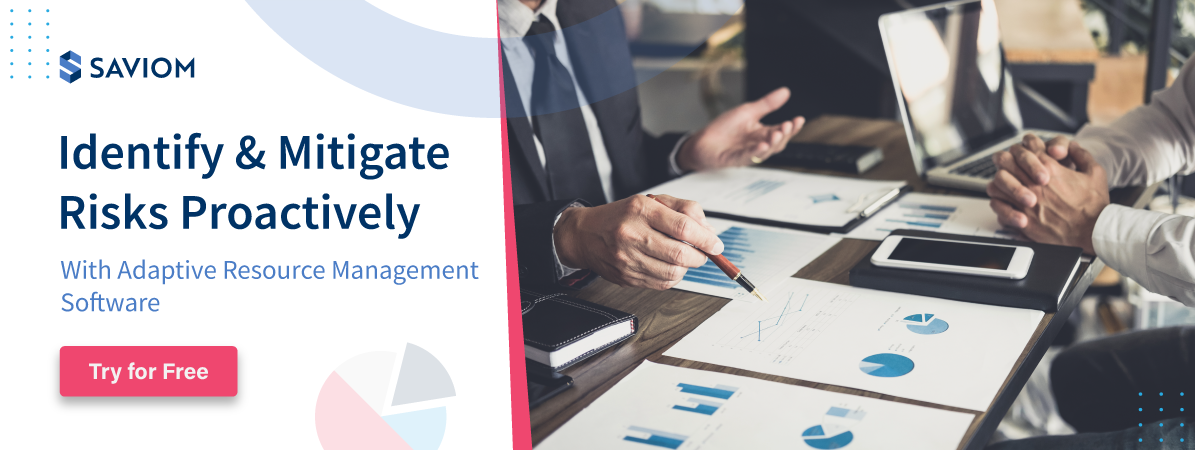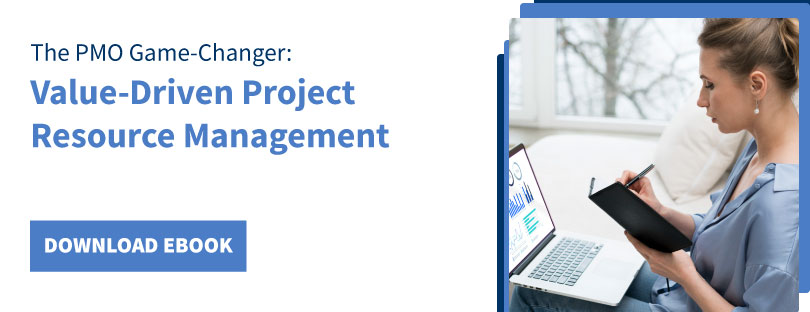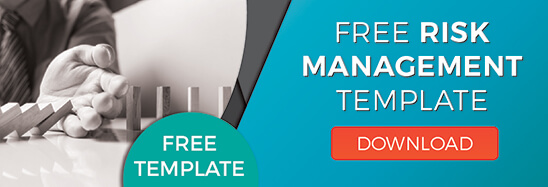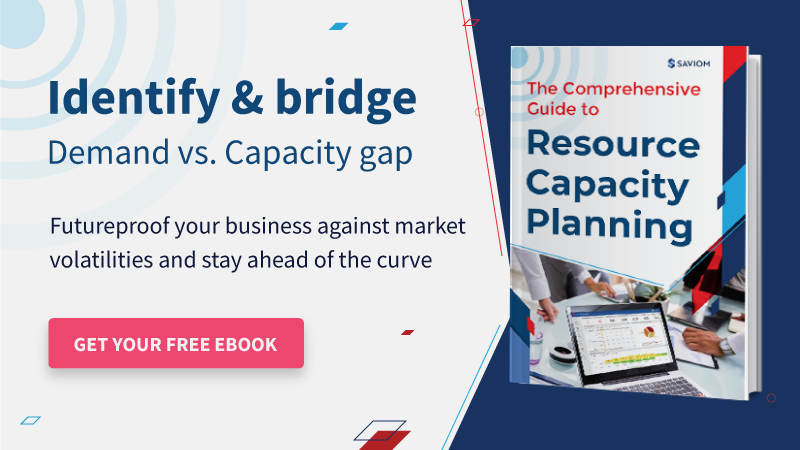Have you ever managed an absolutely ‘risk-proof’ project? Certainly not.
Every project that we deal with comes with both internal and external risks. And not all of them can be mitigated. However, they definitely can be managed with a smart contingency plan.
It implies that your firm must have a robust and intuitive risk management strategy in place. This strategy must have the right components that cover every facet of your organization.
Beginning from your internal environment to review and communication, every aspect must be catered to while formulating the framework.
To make this simpler, we have formed an eight-component risk management framework referring to COSO’s ERM framework. You can use this as a foundation to customize your business needs and risk appetite. This blog takes you through each component in detail.
To begin with, let’s first address an important question here, why do organizations take risks?
Why do organizations take risks?
Every organization works towards a set strategic goal and faces both risks and opportunities on the way. To succeed and stay relevant amidst the growing market volatility, one has to take calculated risks. It is also required to go beyond one’s comfort zone to gain a competitive advantage.
Operating safely without taking a leap will not always give you a competitive edge. One prime example is Nokia, which did not accept the new changing android platform, and we all know how it ended. Hence risks are important to help you adopt the changing market trends and customer demands.
At the same time, an organization must set some guidelines or standards to ensure that everyone maintains a balance between being risk-averse and risk-aggressive.
Now, let’s take a deep dive into the concepts covering the realm of ERM,
What is Enterprise risk management?
Enterprise risk management is a definitive plan-based strategy that aims to identify, assess, and prepare for any potential risks.
It is vital for your firm, as these risks can negatively impact your firm’s financial well-being and reputation.
It enables management to deal with uncertainties and challenges head-on and empowers them to build more value. Based on the organization’s structure and needs, the approach to mitigate against these risks differ.
Having said that, the groundwork for managing these risks successfully has to be right. Here is a brief description of what is the right approach to risk management.
The right approach to risk management
Your approach to risk management influences your overall potential to manage risks. The approach should be in alignment with your organization’s growth strategy.
It should take care of the following:
- You should be able to proactively resolve the internally identified risks in compliance with your firm’s laws and regulations.
- It should help you ensure optimal and effective utilization of resources.
- It should empower your decision-making and planning process by assessing opportunities and threats well in advance.
- In the end, your approach should drive value creation by promoting an effective response to the uncertainties.
Read More: How to Manage Resources in Agile Project Management?
With a comprehensive understanding of the concepts, let’s take a look at each component in detail:
Components of ERM
Organization’s code of conduct
An organization’s core values and code of conduct play a major role in defining your risk aptitude. The aptness to know when to take a calculated risk and when to go the extra mile really matters in the face of dynamic trends.
A healthy work culture sets the tone for employees’ work standards and the ability to deal with risks. It generally rests on the aptitude of the c-suite, who are responsible for formulating the code of conduct. The managerial skills of the leaders will ensure that none of the risks are overlooked in the light of project completion.
Objective setting and goals
Organizations set a mission and vision to ensure that everyone is working towards a common goal. When these objectives are cascaded across the enterprise, every senior and junior employee is aware of their roles and responsibility.
These common business objectives act as a guidebook while you are forming your risk management plan. When everyone knows what they are working towards, it will help you assess if the risk is worth taking. In addition, you must take gauge the following aspects:
Risk tolerance: The maximum level of risk that you can take to fulfill your mission and goals.
Risk appetite: The level of risk you are willing to take to pursue your goals and objectives.
Once you have defined these attributes, you can form a high-level risk management plan that caters to your strategies and goals.
Read More: A Cheatsheet to achieve a Project Manager’s career goals & objectives
Identification of risks and opportunities
It is one of the most crucial components of the ERM framework. In the course of project execution, you will come across two types of events- risks and opportunities. Risks can disrupt the project progress, while opportunities can give your firm some tangible benefits. Analyzing these events is at the core of the risk mitigation strategy.
The process of evaluating potential risks and opportunities should be defined from a strategic goal standpoint.
Risk assessments and its categorization
Risks can be of different types based on the several areas of business they can impact. It includes strategic risks, i.e., it poses a threat to the business sustainability, operational risks, i.e., it can cause inefficiency in resource management, compliance risks, i.e., it violates the rules and regulations of a business, and so on.
You can add a lot more to the list based on the nature of your business. For instance, cybersecurity risks are crucial for an IT firm. The categorization of these risks will enable you to prioritize them and decide a course of action.
Read More: 4 steps to perfect your Project Pipeline Management strategy
Risk Response and mitigation
After careful assessment and categorization of risks, it’s time for you to decide on a response. Based on the type of risks, your response will vary. Here are the ways in which you can respond to risks:
- Reduce – reduce the risks to minimize its impact
- Accept– accept the impact if it’s negligent or minimal.
- Avoid– eliminate or forego the risk.
- Transfer– assign the mitigation to a competent third party.
The onus is on leaders to ensure that employees are implementing the right risk response in favor of the strategic planning process.
Checks and balances
Checks and balances are necessary to ensure that the response activities are carried out according to the policies. The company’s ethics and values are as important as risk mitigation measures. If any employee deviates from the defined laws, it will not go unnoticed.
As a part of the framework and risk management strategy, the board of directors must clarify the roles and responsibilities with transparency. This documentation must also include the internal control measures in case of unethical behavior.
Information and communication
Communication is the essence of any business. Especially in the digitally advanced world, it holds immense value.
In risk management, every employee must be capable of identifying potential risks and communicating it to the managers and stakeholders.
This process will ensure that no risk is overlooked.
To do so, firms should invest in training programs to help their employees learn all about risk assessment and identification. Ultimately, you will see an exponential rise in your efficiency.
Read More: 11 Ways to Improve Cross-Departmental Collaboration
Monitoring & call to action
We all can agree to the fact that every program and strategy has a scope for improvement. Talking about the risk management framework, we live in the age of market volatility, and the fast-paced, changing trends put forth a plethora of risks. These changing trends also change the nature of the risks you are about to encounter.
Organizations must, therefore, monitor and review the strategy at regular intervals. This will keep you informed on what is working for you and what not. Eventually, you will be able to introduce some improvements that will be beneficial in mitigating risks. Remember, risk management is always a Work in Progress.
Conclusion
An enterprise risk management framework is an essential component to maintain the health of your projects by avoiding potential roadblocks. The detailed ERM framework discussed above covers every realm of risk mitigation. So, adopt and form a tailored framework that suits your organizational needs and enhance your project’s profitability.
SAVIOM Solution
SAVIOM has over 20 years of experience helping multinational clients manage their resources efficiently and effectively. This Australian-based MNC has a global presence across 50 countries and has helped 100+ clients meet their specific business goals. Saviom also provides tools for project portfolio management, professional service automation, and workforce planning software. So, SAVIOM can help your business to establish an efficient system geared towards your specific business challenges.













